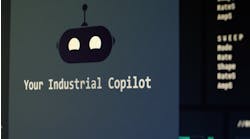By Chris McNamara, Smart Industry content director
There are massive ideas at play, the culmination of generations of work in the industrial space and the collective knowledge of millions of professionals across hundreds of fields.
And the goal is…one. Just one.
The objective with adaptive machines is the ability to effectively, efficiently, economically product batch sizes of one. And the rewards of doing so are infinite.
“Simply put, an adaptive machine is one that adapts to the product being made or packaged,
instead of running sequences of identical products and changing over between runs,” says John Kowal, B&R director of business development. “Instead of a process that is sequential, each product is independently controlled.”
Simple to explain, but (like any change) adapting to the world of adaptive machines has its challenges. Dedicated machine designs have been at the crux of manufacturing since the Industrial Revolution. (The first one.) This machine does X. That machine does Y. So, the switch to a strategy in which base machine modules are routinely configured to production requirements—enabling that batch-of-one capability—is a true sea change.
What’s driving this transformation? Youth. As Kowal says, “We’re operating in the age of the digital native—a generation of people who have never lived without the internet, without e-commerce, without connected devices at hand. The Millennial Generation is now the largest consumer segment in the North American economy, and they expect what they want, when they want it.”
Manufacturers—the smart ones at least—best respond.
These Millennial consumers aren’t dictating machine-design, of course, but they are prompting the global customization trend, nudging the batch-of-one concept from the fantasy end of the spectrum closer to reality.
So, what’s at play here? What are the tools and tricks that enable adaptive machines in the larger smart-factory framework?
As Kowal explains, each order is turned into a unique recipe or bill-of-materials, and each product is independently controlled through its fabrication, assembly and packaging via track technology. One product equals one shuttle that moves through the workstations required to produce the order. This track technology will vary by manufacturer, but the concept is consistent.
Operations will be impacted more drastically. This is a good thing. As changeover becomes constant, there is no differentiated “changeover time,” merely reconfiguring, adding or removing modules as the orders dictate.
The rewards of embracing the adaptive machine are attractive enough to persuade even the most stubborn and skeptical among us to take a closer look. Batch-of-one manufacturing can enable an enterprise to streamline the e-commerce model by shipping directly from production line to consumer, which saves everyone money. There are reduced requirements for raw materials in working smarter like this, less energy expenditures (good for both bottom line and environment) and a drastic reduction in unsold inventory. It ain’t manufactured until it’s ordered, after all.
And from a business-strategy perspective, the adaptive machine enables a closer, more responsive, more transparent relationship with the customer. Win, win, win, which eases the process of getting the greenlight to invest.
A key justification for investment in adaptive machines, says Kowal, is the ability to exploit the unknowns of the future manufacturing world. The short lifecycle of a product is less scary to manufacturers who know the machines they use to produce it can be reconfigured once demand wanes. “This is especially true in localized customization activities, such as contract packaging and rainbow packing of beverages and snacks,” he adds. “With highly configurable machinery, time-to-market is reduced because new products don’t necessarily require all-new production lines. Yet, it’s still beneficial to the machine builders, who are likely to enjoy greater customer loyalty since they are intimately familiar with the base machinery they supply.”
This concept will not work in every arena. Yet. But in suitable manufacturing environments, fortune favors the bold. “The first-mover advantage will go to business leaders with the vision and the will to adopt early,” surmises Kowal. “To mitigate the perception of risk, initial investment can be limited to one system or cell, one product line, or even one region until proof-of-concept is achieved.”
The tools and technologies and thought-leadership to fully embrace adaptive machines are at the ready. The greatest obstacle could be that in the man/machine paradigm, the machines might prove easier to adapt.




